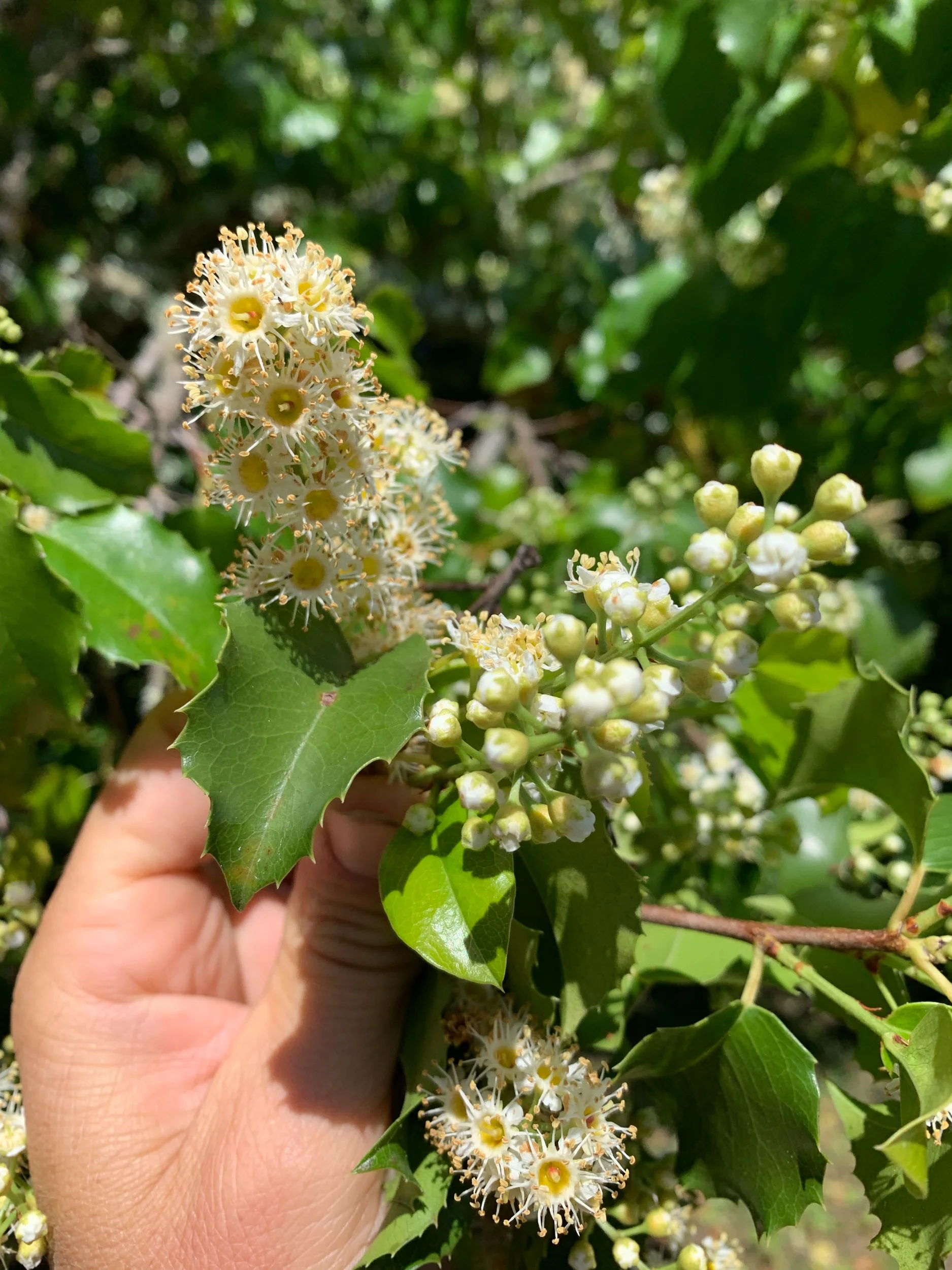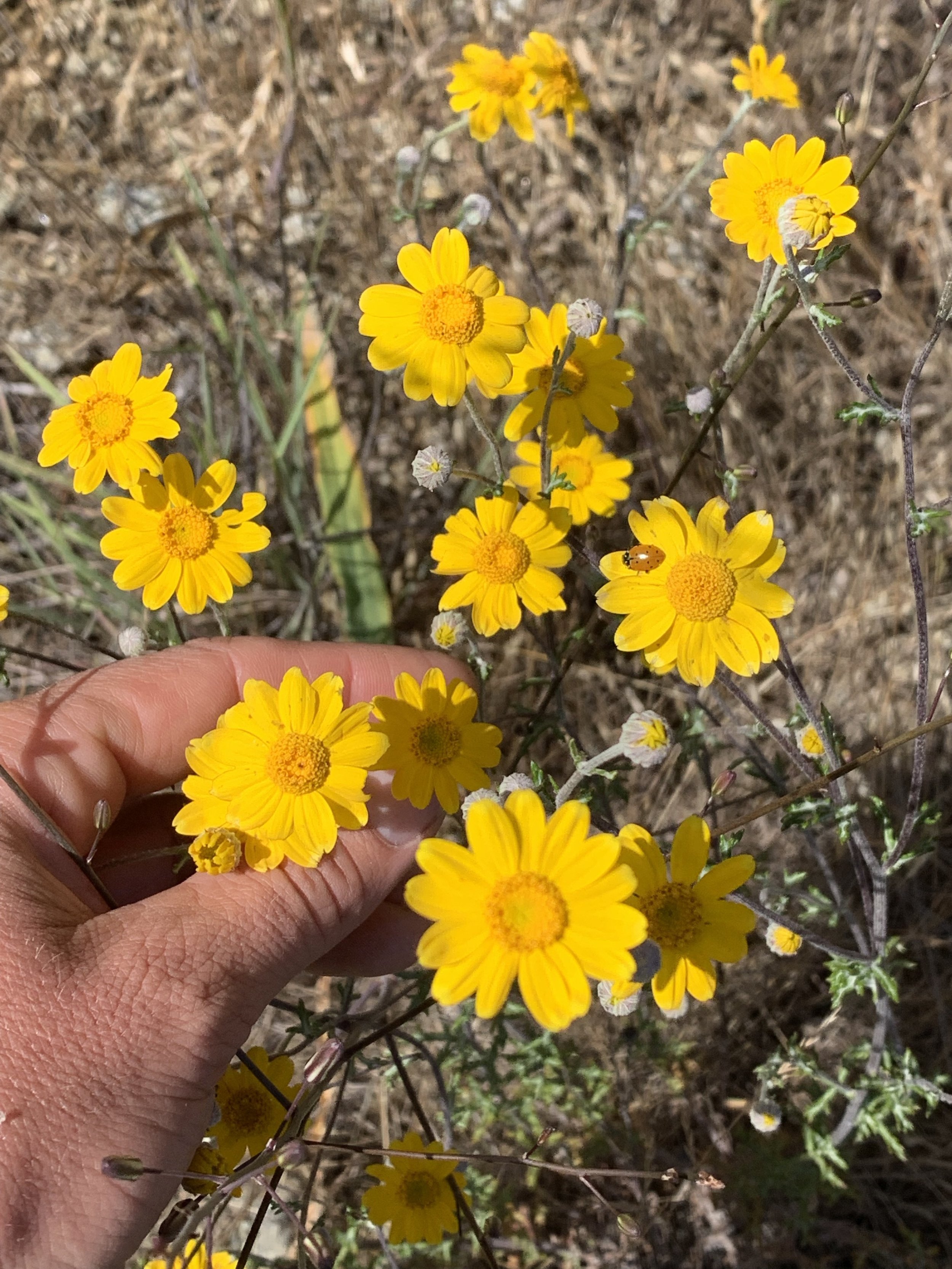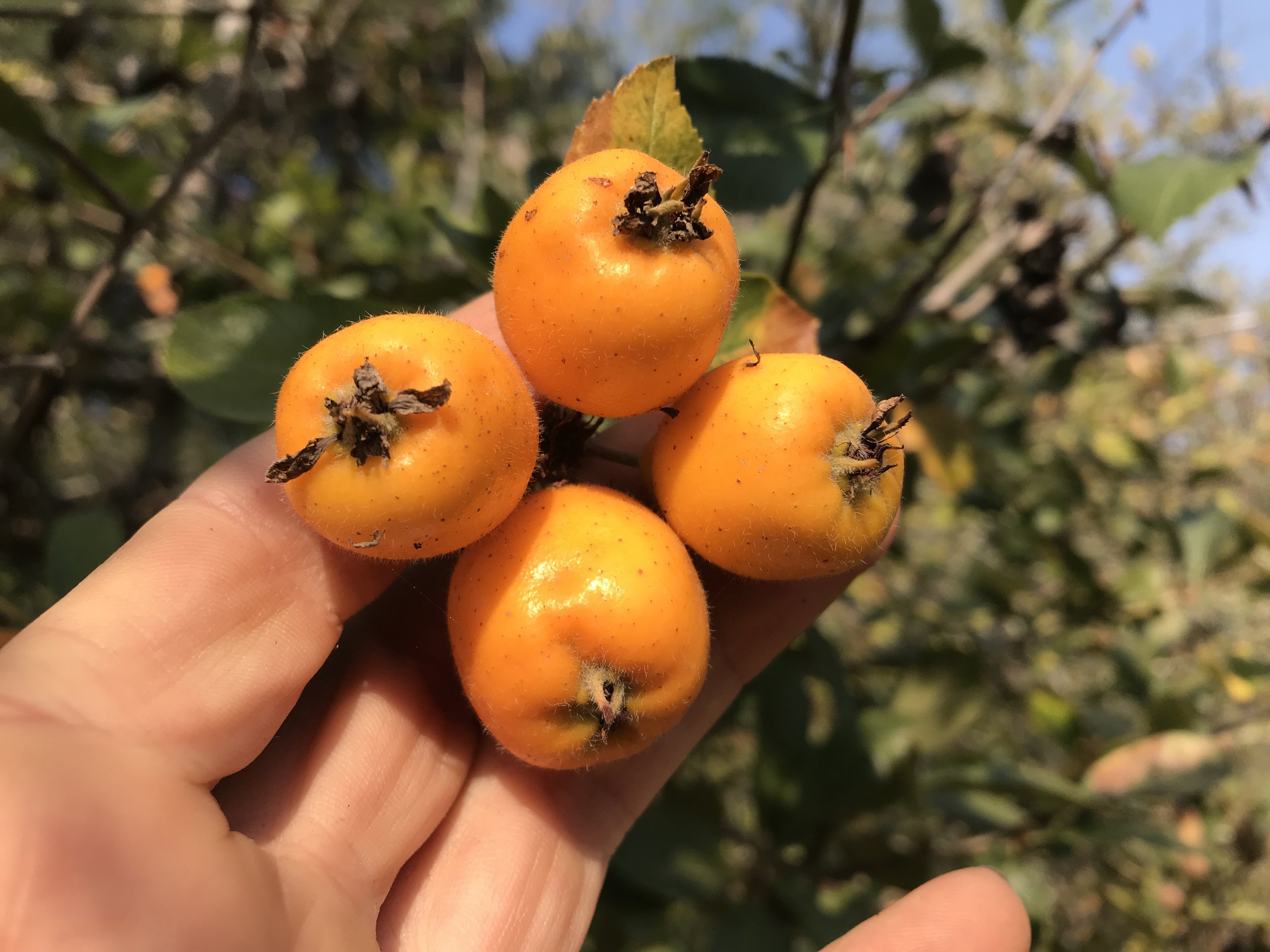Calochortus venustus flower
Calochortus venustus flower.

Calochortus venustus flower

Calochortus venustus flower.

Calochortus amabilis flowers.
Calopchortus amabilis, another California native flowering bulb. This is a stout branching plant with bright yellow flowers with a triangular outline.
The plant prefers higher levels of shade, and soil humus rich in organic matter, however it grows in the wild in a wide variety of conditions, including full sun, rocky hillsides, chaparral and Serpentine soils. .
In the wild the plant can be found along the North Coast Ranges from Solano and Marin Counties to Humboldt an Colusa County.
As with the bulbs of many Calochortus species, C. amabilis bulbs were traditionally eaten by Indigenous peoples in the region. Bulbs were baked or boiled and eaten in a similar way as sweet potatoes. Large swaths of land were carefully sustainably managed over generations to provide supply of these delicious and nutritious bulbs.

Young seed pods on Calochortus amabilis

Calochortus amabilis flower close-up.
This is a somewhat unique, tree-like shrub, with a short trunk and numerous branches growing upright. When in bloom this species has a spectacular reddish-pink bloom, very bright and in stark contrast to the desertscape. Reportedly the bark is stripped and cooked and used to wash cuts.

Palo Adan, leafing out

Palo Adan, leaf

Palo Adan

Palo Adan, bark detail

Prunus illicifolia flower, late May.
A west coast native annual nitrogen fixing plant in the Fabaceae family. Reminds me of Crotolaria in its growth habit and overall appearance. It looks like it has potential as a cultivated, drought tolerant biomass or cover corp species.

Thermopsis macrophylla leaf and flower.

Thermopsis macrophylla flower spike.

Mimulus gluttatus flower

Mimulus aurantiacus flower

Clarkia concinna - Red Ribbons

Castilleja spp. - Broom-rape Family

Calochortus vestae - Coast Range Mariposa Lily

Helianthella California?


Calochortus lutes (yellow) and C. vestae (white).

Eriodictyon californicum, Yerba Santa

Elaeagnus pungens is a species of flowering plant in the family Elaeagnaceae, known by the common names Nawashiro-gumi thorny olive, spiny oleaster and silverthorn; also by the family name "oleaster". It is native to Asia, including China and Japan. Today it is widely spread throughout temperate and mediterranean regions of the world. Primarily this plant seems to be used as a ornamental shrub used in landscaping. However, the Elaeagnus genus deserves more attention in agroforestry and sustainable agriculture in general for their nitrogen fixing properties, edible berries and seeds and promising medicinal properties.
It was also used to abandoned mining sites in Kentucky and other areas.
Seed (Dry weight)
0 Calories per 100g
Water : 0%
Protein: 42.2g; Fat: 23.1g; Carbohydrate: 0g; Fibre: 0g; Ash: 0g;
Minerals - Calcium: 0mg; Phosphorus: 0mg; Iron: 0mg; Magnesium: 0mg; Sodium: 0mg; Potassium: 0mg; Zinc: 0mg;
Vitamins - A: 0mg; Thiamine (B1): 0mg; Riboflavin (B2): 0mg; Niacin: 0mg; B6: 0mg; C: 0mg;
Reference: [ 218]
Notes:
Freshly sewn seed should germinate freely within 4 weeks, though it may take 18 months. Stored seed can be very slow to germinate, often taking more than 18 months. A warm stratification for 4 weeks followed by 12 weeks cold stratification can help.
You can also take cuttings in the summer (June, July - August) - half-ripe wood, 7 - 10 cm, ideally with a heel
Despite its invasive potential, E. pungens is widely cultivated as a garden plant in temperate regions. It tolerates varied environmental conditions, including heat, cold, wind, coastal conditions, shade, and full sun. It is very drought-tolerant. It can grow in varied soil types, including those found at mine spoils. Numerous cultivars have been developed, especially for variegated foliage effects.

I encountered this Mexican hawthorn tree at the Gold Ridge Experimental Farm in Sebastopol, CA - Luther Burbank’s former laboratory. Although much of the acreage has long been converted to housing development and only a small tract of the former farm remains, there are some interesting trees surviving. One area I return to whenever I visit is the small group of Cratageus species in the back where a few species, including C. mexicana, are still thriving.
Compared to the Chinese Hawthorn, C. pinnatifida, the Mexican hawthorn tastes much better out of hand and has an interesting aroma, reminiscent of some obscure tropical fruit or synthetic bubblegum.
The fruit of Crategeus mexicana is eaten in Mexico cooked, raw, or canned. It resembles a crabapple, but it has three or sometimes more brown hard stones in the center. It is a main ingredient used in ponche, the traditional Mexican hot fruit punch that is served at Christmas time and on New Year's Eve. On Dia de los Muertos tejocote fruit as well as candy prepared from them are used as offerings to the dead, and rosaries made of the fruit are part of altar decorations. A mixture of tejocote paste, sugar, and chili powder produces a popular Mexican candy called rielitos, because it resembles a tiny train rail.
In some parts of Mexico, tejecote is taken for treating flu and cough, and also to prevent several cardiovascular diseases.
Due to its high pectin content, the fruit is industrially processed to extract pectin for the food, cosmetic, pharmaceutical, textile and metal industries.
Other uses include food for livestock (for which the leaves and fruits are used) and traditional medicinal uses; a Mexican hawthorn root infusion is used as a diuretic and as a remedy for diarrhea and fruit-based preparations are a remedy for coughing and several heart conditions.
The Mexican hawthorn tree's wood is hard and compact, it is good for making tool handles as well as for firewood.

I first encountered this spectacular quince species at the Burbank Experimental Earm in Sebastopol, California. Notable for its massive fruit, which is at first a light green then turning yellow as it ripens. Among the apples, Sorbus domestic, and a number of other surviving Burbank species this one seems to be growing strong and quite productive.
The tree is a deciduous, semi-evergreen tree in the Rosaceae family (Rose, Pear, Apple, Loquat). Native to Eastern Asia in China this is the sole species in the Pseudocydonia genus. Previously Pseudocydonia was placed in the Asian genus Chaenomeles, however differs in that Pseudocydonia lacks thorns and produces single flowers. The Chinese Quince is closely related to the European Quince, Cydonia bologna. The two species differ in that Chinese quince has somewhat serrated leaves and smooth fruited skin. The fruit on the Burbank Hybrids also appear to grow larger.
The tree is referred to as mùguā-hǎitáng (木瓜海棠).In Chinese, mùguā (木瓜) also means, “papaya”.
Grows 8-10 m long. The fruit is a large ovoid pome 12–17 cm long with five carpels; it gives off an intense, sweet smell and it ripens in late autumn.

The large fruit is hard and astringent, however after a period of frost the fruit does become a bit softer and less astringent. The fruit can be used in the same way as quince, poached, baked or used for making jam. The tree is also grown as an ornamental in Southern Europe.
In Korea it is used to make a preserved quince and quince tea.
The bark and trunk of larger trees are highly ornamental. The wood is frequently used in Japan for shamisen, a three-stringed traditional Japanese musical instrument derived from the Chinese instrument sanxian.
The fruit is used extensively in Traditional Chinese Medicine to treat rheumatoid arthritis. Recent pharmacological studies suggest that extracts of phytochemical in the fruit have antioxidant and antiviral properties.
Capparis spinosa growing in its natural habitat, on the limestone coastal cliffs in Kefalonia, Greece.
